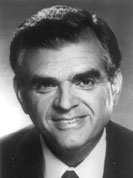An acquaintance advised me that you’d posted some critical analysis of the attendance projections for the new Museum and the Caterpillar Experience. Since I’ve been very involved in the development of those numbers, I thought perhaps that some additional info might be beneficial for your continued evaluation. I don’t expect that this info will eliminate your skepticism, but as this aspect of the project continues to receive significant focus, I’d like to attempt to explain some of the rational behind the numbers.
First, I’m glad you understand the 1/3 – 1/3 – 1/3 breakdown of the total attendance figure of 360,000. This does immediately get confusing, but it means that we recognize that not everyone who visits the site will visit both facilities. Therefore we’re talking about each facility having an annual attendance figure of 240,000.
Let’s focus on the Caterpillar Experience first as that’s my primary responsibility. Here we’ve used the John Deere Pavilion in Moline as our primary benchmark. For the first five years after the facility opened in August of 1997, it averaged 228,000 visitors annually. Attendance has declined over the past five years however, averaging only 176,000 per year. I think this shows that without continued investment in updating exhibits and displays any facility such as this will experience attendance declines. We believe that the exhibits and displays planned for the Caterpillar Experience, along with the significant focus on educational aspects of the facility, and the commitment to update the exhibits and displays within the facilty, should allow the Experience to attract and maintain an average annual attendance of 240,000 visitors per year.
For instance, we plan to work with instructors from the Caterpillar University to develop a potential course curriculum for middle school, high school and college students who are visiting the Experience on an organized tour. If time permits, their instructor will be able to select a grade level appropriate topic from the curriculum and the group could then extend their visit after the normal tour with this additional class. We’re hopeful that this concept will make the Experience an even more attractive field trip for area educators and continue to bring them to the facility year after year.
Most of the customers that our dealers bring to the Peoria area to visit Caterpillar facilities have free time from the end of first shift operations at the factories (about 3pm) until they go to their evening meal. Again, we hope that the dealers will find the displays and exhibits at the Experience very appealing and bring their customer tour groups to visit the Experience during this period of free time in the late afternoon. I suspect you can guess where many of these guests in Peoria spend most of that time currently.
Attendance projections for the Caterpillar Experience however, should really not be a controversy in regard to the overall project, as the company will be paying for the operation of the facility and if attendance projections are not achieved, it will be at no expense to the general public. So, lets look at some of the museum attendance projections in more detail. I’ve worked with the museum planners and their consultants on these numbers, including various revisions, several times over the past four years. We’ve scrubbed these numbers over and over until we’ve concluded that they are “reasonably achieveable”. Guaranteed, certainly not; a stretch, most probably; will achieving them require significantly more aggressive advertising and promotion than Lakeview currently utilizes, absolutely.
OK, here goes, again we’re looking at an annual attendance projection of 240,000 visitors or an average of 667 per day and in response to some of the inquiries you’ve received, yes, that includes every visitor to the facility (with the exception of those pre-school students that are enrolled in the facilities day-care program which will be a carry over from the current program operated at Lakeview Museum).
As I understand their projections, those 240,000 visitors have been broken down into five sub-categories as follows:
- Exhibit Galleries & Planetarium only
(56,000 annually or an average of 156 per day)
(The general admission ticket will include admission to both the
exhibit galleries and one show in the planetarium).
- Exhibit Galleries & Planetarium & IMAX theater combination ticket
(53,000 annually or an average of 147 per day)
- IMAX Theater only
(93,000 annually or an average of 258 per day)
- Planetarium only
(19,000 annually or an average of 119 per day)
(this would primarily be school tours so I’ve assumed 160 days of school –
throw out the first 20 days while teachers are getting organized).
- all other visitors
(19,000 annually or an average of 53 per day)
(this would primarily be museum classes and special events, exhibit openings,
special fund raising events, visitors to the museum store or book
court)
With this breakdown, it becomes apparent that the IMAX theater is projected to be the primary generator of attendance at the Museum facility. The closest IMAX theater facility to Peoria is at the Putnam Museum in Davenport. Their attendance figures were the primary benchmark taken into account when the PRM numbers were developed. The four-year average attendance figures at the Putnam’s IMAX theater were 97,000 during the day and 73,100 during the evening or a total of just over 170,000. From the above figures, you can see that the museum planners are projecting 146,000 for annual attendance at the PRM IMAX or 86% of the Putnam’s history. When these numbers were originally put together, this was assumed to be a conservative projection for the PRM and was accepted as reasonable.
If you’ve been to visit the Putnam Museum in Davenport, I’d hope you’d agree that it is not located in a very attractive, nor conveniently located area of the community. The PRM’s location on the riverfront should generate much greater visibility to the Museum’s IMAX and boost attendance figures. Being relatively close to the downtown hotels and guests in town overnight for Civic Center events should also provide a boost to IMAX attendance figures. (To the best of my knowledge, negotiations with IMAX are still continuing on a positive track and museum planners have every intention of this large screen theater bearing the IMAX label).
Also, again referencing back to the Caterpillar dealer and customer guests in Peoria. We’ve talked to the Museum planners about the possibility of showing the IMAX film “The Fires of Kuwait” each afternoon during the week at about 4:00 or so, at a somewhat expected slack time at the museum after the school age tour groups have left for the day. This film is a very interesting documentary on the efforts to extinguish the oil well fires in Kuwait after the first gulf war and features the extensive use of Caterpillar equipment in very hazardous conditions. Again, we’d expect that many of the dealer and customer guests would be interested in watching this movie during that normally free time. It would certainly be a unique opportunity for them during their visit to Peoria.
Looking at this IMAX attendance projection on a daily basis breakdowns down to approximately 400 per day. With four shows planned during the day and two shows in the evening, that would require an average of about 68 people per show, or about one large school bus per show with a few others joining them. Reasonable or unreasonable, to each his own opinion, but the Museum planners have set this as their target.
Another way to analyze the data would be to combine the 56,000 figure for the Gallery/Planetarium only visits with the 53,000 figure for the Gallery/Planetarium/IMAX visits which would result in a total of 109,000 visitors to the galleries each year or a total of just over 300 visitors per day. And yes, this projection counts every student who tours the exhibit galleries at the museum with his class on a field trip. Obviously the museum planners feel these numbers are reasonable and achievable, skeptics will look at them as overly optimistic and most likely unobtainable. However, doesn’t the JFK quote go something like, “Some men see things as they are and ask why, others dream of what might be and ask why not?” Perhaps that’s appropriate in this situation.
There are pages and pages of other benchmarking data to substantiate all of these numbers, however I don’t have the time or space to cover everything individually. My intent in sharing these numbers with you is to simply demonstrate that they were not simply pulled out of the air in an effort to make the project look attractive. I suspect that some of your fellow bloggers will recall the old phrase, “Liars figure and figures lie” However, from my perspective, one of the primary objectives of the “Build the Block” campaign has been to share information about the project with the public in order to allow them to better understand the proposed development and I hope this information contributes to that understanding.
Mark L. Johnson
Project Manager – Caterpillar Experience

 The following is a response to my post, “
The following is a response to my post, “ From
From  The
The